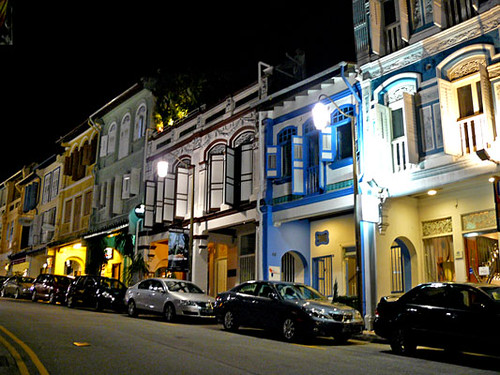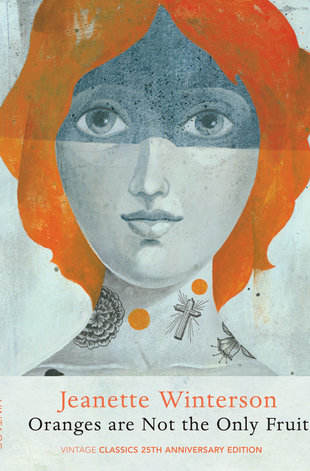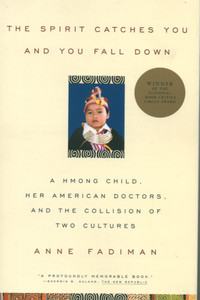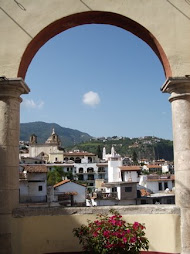

The view from the entrance to the converted shophouse home featured in this week's "Great Homes & Destinations." The high ceilings, whirring fan, and indoor garden help moderate the tropical heat. Image from the
New York Times.
The
New York Times today shows off a
domicile in Singapore in this week's "Great Homes" feature. The piece tells of two pretty young management consultants (jealous? me?) outfitting a classic shophouse with modern designs and local materials. The article taught me that
Dahlia Gallery has great furniture offerings and that bespoke hardwood furniture is terribly cheap in Indonesia.

The shophouse facade; note the use of European-inspired plastered ornament. More images from the NYT article
here.
Shophouses are an architectural distinctive of Southeast Asia. The houses are built as a series of narrow, contiguous properties. A shophouse is typically two or three stories tall with the ground level dedicated for commercial use and the upstairs given over to accommodation. The business level recedes from the street, creating a sheltered walkway along a row of adjacent shops. Most are ornamented with versions of classical pilasters, bold verticals against the horizontal structures, between the units or beside the shuttered windows. Often each house displays its own color scheme of contrasting colors, a convention that puts on display the riotous palette favored by the Peranakan merchants that prospered in this region.
Today as Singapore has urbanized, most shophouses have been converted to single-use buildings, either as high-end single-family homes or as locations dedicated to business. As houses they carry many of the romantic associations New Yorkers feel towards brownstones or San Franciscans do towards row houses. So shophouses can be hard to find at a reasonable price. The romance has also prompted commercial development of shophouses for upscale boutiques, like Club St/Ann Siang Hill. Unfortunately, ersatz shophouses - lined up, canopied over, and air-conditioned - form the main structures of the monstrous Clarke Quay development.

The shophouses along Club Street host arty shops, international fashion brands, swish offices, trendy restaurants, and even a few of the longstanding Chinese clan associations that gave the road its name. Leone Farbre has more photos on
Flickr.

The strange canopies that allow visitors to Clarke Quay to experience air-conditioning whilst still outside. Image from the materials firm
Macalloy's website.































.jpg)